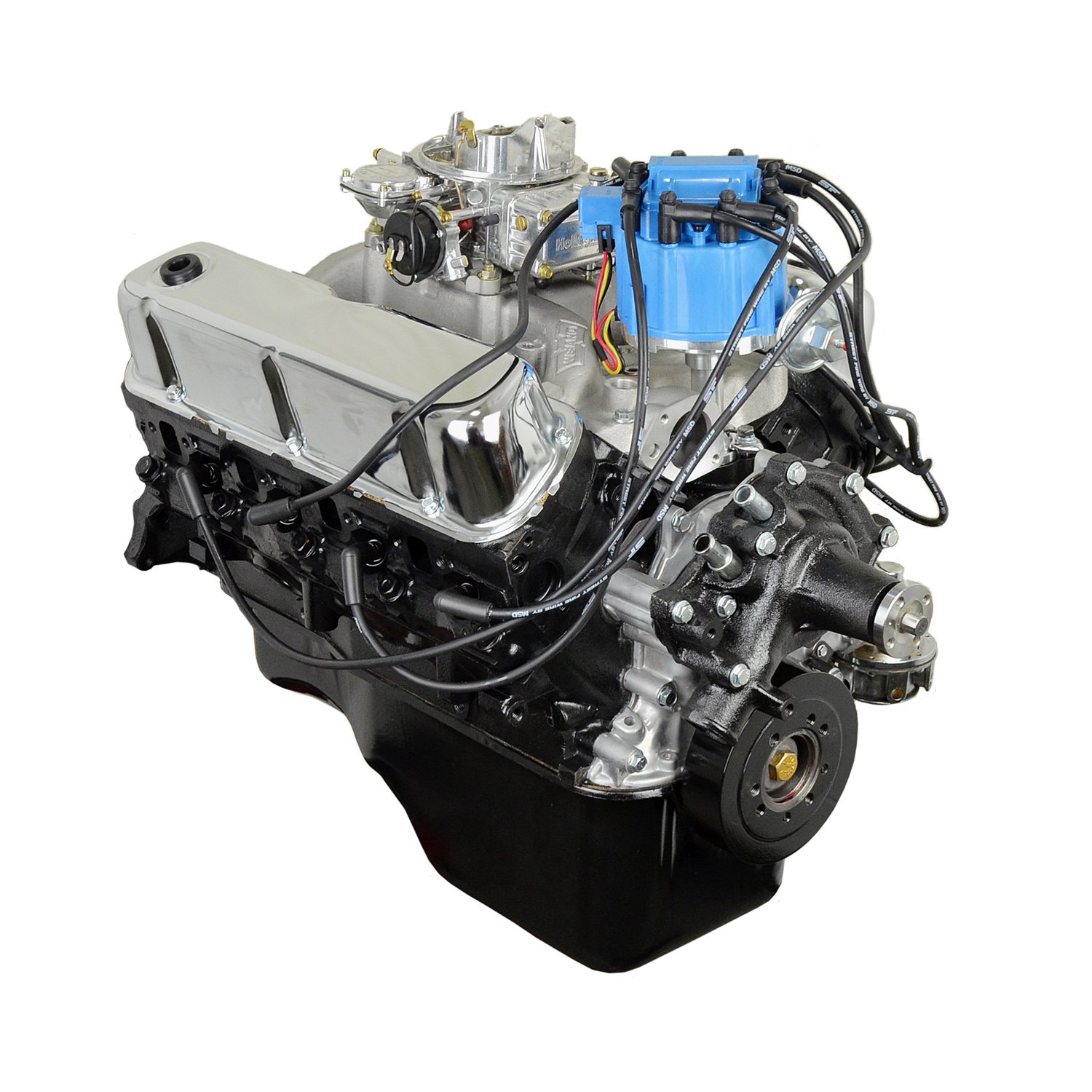Crate Engine
ATK Core Return Process
JEGS and ATK appreciate your business and want to ensure that your core return is as smooth as possible.
Please CLICK HERE for ATK Core Return Process
NOTE:
- Core return can be any Small Block Ford 302ci engine
Engine Specifications
A classic 302 Ford engine with stock idle, built to replace a stock worn out 302. This Engine is based on the 1980-1986 Ford 302.
- Horsepower: 240 hp
- Torque: 325 lb/ft
Block Information:
- Seasoned OE non roller block
- Bore/Stroke: 4.060" x 3.000"
- Displacement: 302ci
Rotating Assembly:
- Crankshaft: OE cast 1 piece seal
- Balance: 50oz external balance
- Rods: OE powder metal rod 5.090" stock bolts
- Compression Ratio: 8.6:1
- Pistons: Hypereutectic
- Rings: Moly
Camshaft Specs:
- Camshaft: Hydraulic flat tappet
- Cam Duration @ .050": Intake 192 / Exhaust 183
- Cam Lift: Intake .380" / Exhaust .395"
- Lobe Separation Angle: 111lsa
- Timing Chain: Double roller
Cylinder Head Information:
- Cylinder Heads: OE E5TE/E7TE cast iron
- Combustion Chamber: 62cc
- Valve Size: 1.77" Intake / 1.46" Exhaust
- Rocker Arms: Stamped steel 1.6 ratio pedestal mount
Oil Pan Information:
- Oil Pan: Front sump
- Oil Pump: Melling standard volume
Engine Info
- Balancer: External 50oz
- Carburetor: Holley Street Avenger 600 cfm #510-0-80457SA
- Distributor: HEI (iron gear) (may not clear OE air cleaners/monte carlo bar)
- Firing Order: 15426378
- Flexplate: 164 tooth 50oz External Balance
- Fuel Pump: Mechanical 80gph
- Intake Manifold: Weiand dual plane #925-8124WND
- Octane: 91+
- Spark Plugs: Autolite #417-24
- Spark Plug Gap: .035"
- Spark Plug Wires: 8mm
- Timing: 34-36 Degrees (Vacuum port plugged on carburetor)
- Water Pump: RH inlet - standard rotation
Notes: This engine does not have a manual transmission boss for the clutch.
Disclaimer: The parts listed are ATK's recommendations of parts to be used to obtain the power figures listed. Power figures can vary based on parts used by the end user. Some modifications to the vehicle may be required using these and or other aftermarket parts.
Engine Break-In Procedure
Use or break-in oil or conventional (non-synthetic) 10w30 oil with zinc additive for the first 500 miles of operation. Do not drive for long periods at any single speed, always vary your speed. Do not tow a trailer or put other heavy loads on the vehicle. It is best to avoid long periods of idling during this period. Check the engine oil and coolant levels daily.
Engines with flat tappet hydraulic cams only - Run the engine between 2,000 and 2,500 RPM's, with no-load on the engine for the first 30 minutes. Let the engine cool down completely and repeat process 2-3 more times. Do not idle the engine for any extended period at this time, this is critical to break in the camshaft.
At 500 Miles change the engine oil and filter using conventional (non-synthetic) oil with a zinc additive. Check fuel and ignition settings, adjust valves (where applicable). Drive the next 500 miles normally, without high RPM's (below 5000 RPM), hard use, or extended periods of high loading or long periods of idling.
Change the oil and oil filter again at 1,000 miles. Continue using conventional (non-synthetic) oils and zinc additive, until about 4,000 miles. At that point, you may run a quality 10w30 synthetic oil if you choose. Use of oil with zinc or a zinc additive for the life of your engine is recommended.
Specifications:
Will this fit f150 ford 1/2ton 1978 two wheel drive
Is there a warenty
Will this fit in a 1965 mercury comet 4 door with existing 289
Will this motor work in a 1965 Ford fairlan 500 costom
Will it bolt into a 1988 Ford ranger with a M5R1 transmission
The notes say this does not come with manual transmission boss for clutch. Does this mean it will not work with a factory 4 speed 1967 mustang.
Would like to buy this Engine for my 1965 Mustang. However I would like to keep my serpentine kit which asks for a counterclockwise water pump. I saw timing cover # 555-503 302, plus water pump # 555-510 71. Will these parts fit this engine ?
Would this fit in an 02 fors f150
Motor Vehicles
WARNING: Motor vehicles contain fuel, oils and fluids, battery posts, terminals and related accessories which contain lead and lead compounds and other chemicals known to the State of California to cause cancer, birth defects and other reproductive harm. These chemicals are found in vehicles, vehicle parts and accessories, both new and as replacements. When being serviced, these vehicles generate used oil, waste fluids, grease, fumes and particulates, all known to the State of California to cause cancer, birth defects, and reproductive harm.
Tools:
WARNING: Some dust created by power sanding, sawing, grinding, drilling, and other construction activities contains chemicals known to the State of California to cause cancer and birth defects or other reproductive harm. Some examples of these chemicals are: lead from lead-based paints, crystalline silica from bricks and cement and other masonry products, and arsenic and chromium from chemically treated lumber. Your risk from exposure to these chemicals varies, depending on how often you do this type of work. To reduce your exposure, work in a well-ventilated area and with approved safety equipment, such as dust masks that are specially designed to filter out microscopic particles.
Electrical Cords
WARNING: The wires of these products contain chemicals known to the State of California to cause cancer and birth defects or other reproductive harm. Wash hands after handling.



